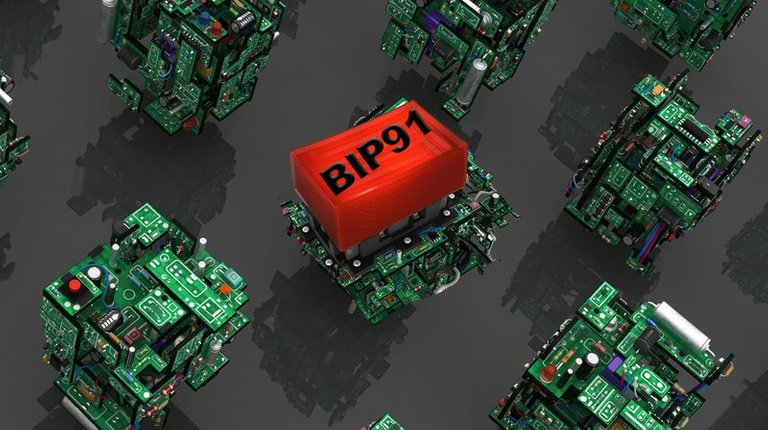
BIP 91 has officially locked in.
At press time, bitcoin's miners, the network of computer operators that secure the blockchain, have now been signaling that they will upgrade the code for 269 blocks in the same signaling period, a move that takes the software one step closer to changing its structure to accommodate more transactions.
Stepping back, the move finds miners agreeing to cement the first part of a larger effort to upgrade bitcoin, called Segwit2x.
The controversial proposal seeks to change the transaction structure of the network via Segregated Witness, and increase a cap on the amount of data that can be stored in transaction blocks, a move tentatively scheduled for later this fall.
With the signaling, mining pools nearly unanimously rallied behind the proposal, and BIP 91, designed partly to avoid a potential bitcoin split in the network, emerged as the first major step in following the roadmap.
In response, bitcoin saw a sharp price increase on Thursday due to the perceived forward progress, with some calling the BIP 91 lock-in a victory marking a "new dawn" for bitcoin.
But, the lock-in is just the first step to activating SegWit on the network, and other steps come with a bit more complexity.
Specifically, the following things need to happen for it to activate:
There will be a 336-block "grace period," taking about two and a half days, during which miners have time to prepare for activation.
BIP 91 will activate at block 477,120. Theoretically, mining pools will start rejecting blocks that do not signal support for SegWit (BIP 141). In this way, BIP 91 is a "coordination mechanism" that gets other mining pools to follow along or lose out on mining rewards.
SegWit could lock-in during the next difficulty adjustment period of 2016 blocks, which takes about two weeks.
The latter is when Segwit activation is "all in the clear," as BIP 91 creator James Hilliard put it.
That's when bitcoin's SegWit upgrade will be official, and an upcoming user-activated soft fork (UASF) proposal, BIP 148, superseded.
Possible hiccups
But some community members, including respected bitcoin developers and mining pool operators are raising concerns about possible missteps between the time BIP 91 is activated and SegWit locks in.
These concerns boil down to:
Thinking miners might not be running the software they signal. If enough mining pools – over 50% – are not running the software, it could impact whether SegWit goes through or not.
Speculating that mining pools might run the correct software for a while, then stop before SegWit locks in.
In simpler terms, some bitcoin users don’t trust others to keep their word.
Bitcoin Core contributor Bryan Bishop seems like one of those, suggesting via Twitter that one potential outcome is SegWit not activating at all this time around, even though a few scaling proposals are coming to a head soon.
WeChat saves the day?
But Hilliard waves that apprehension off. "There'd have to be a lot of mess ups," he told CoinDesk.
For him, it just doesn't seem likely since lock-in has recently been at the top of mining pool operator's priority list. Behind the scenes, he and other pool operators have been restlessly working to ensure BIP 91 goes according to plan and bitcoin transitions to the new ruleset smoothly.
Plus, even more Core contributors, who have been largely opposed to Segwit2x, are helping smooth the transition. Bitcoin Core contributor Matt Corallo has been making updates to FIBRE, the fast block-relaying network miners use, which Hilliard said is "probably what’s holding a lot of this together."
It seems many people want to see BIP 91 succeed, likely in an effort to supersede more aggressive alternatives such as BIP 148. While Hilliard agrees with the concept of a UASF, he believes BIP 148 could be riskier than BIP 91.
And finally, because transitioning to the new BIP 91 rules relies on mining pools alone, Hilliard said:
"This is where mining centralization makes things easier, because I can just message everybody on WeChat and help them if needed."
Hi! I am a robot. I just upvoted you! I found similar content that readers might be interested in:
http://www.bitcoinisle.com/2017/07/20/bip-91-locks-in-what-this-means-for-bitcoin-and-why-its-not-scaled-yet/